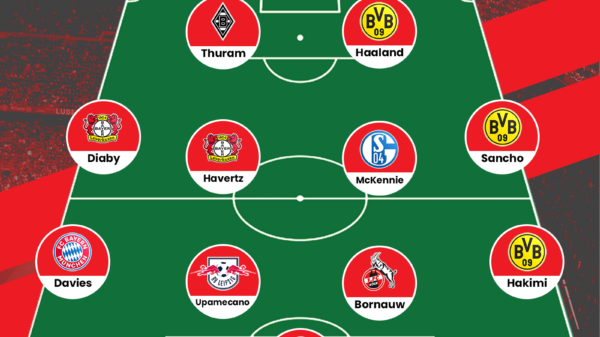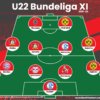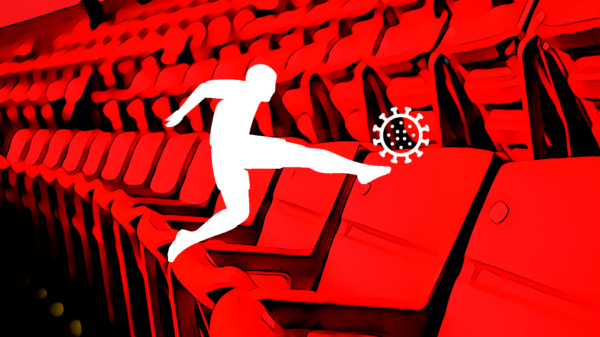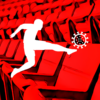
via our Tactics Creator app
Click here to visit!
Borussia Dortmund travelled to play Stuttgart in a key game for the home team. Stuttgart sat in mid table before this game and needed to get a win, or least a draw in order to keep their challenge for the Europa League spots alive. Dortmund needed a win to tighten their group on second spot in the league table.
The home side started with a make shift defence as some key players like Serdar Tasci and Cristian Molinaro, resulting in Felipe Lopez making only his 2nd appearance of the season. Stuttgart lined up with a 4-1-4-1 formation. This was done to stop Dortmund playing through their midfield with ease.
Dortmund too, made changes to their side, with Jakub “Kuba” Blaszczykowski being rested, and regular right back Lukasz Piczek starting on the bench. Kevin Groskreutz started in his position. In midfield, Sebastian Kehl was left out with one eye on the upcoming trip to Malaga, and Sahin started alongside Bender. Ilkay Gundogan was pushed further up field to join the attacking trio of Reus, Gotze, and the goal scoring machine, Robert Lewandowski.
Stuttgart
Counter Attack
The home team set themselves up to defend, and basically launch counter attacks. The idea was to spread 5 men across midfield, invite the Dortmund full backs to charge forward, and then exploit the space left there by them. A lot of the attacks launched by Stuttgart were down the flanks for this reason. The pacy Ibrahima Traore was played on the left wing to attack Kevin Groskreutz. This also made it hard for Dortmund to play their natural game through the centre as the area was basically overcrowded. In order to play their counter attacking game effectively, Stuttgart were playing longer passes. This was an obvious ploy to catch the Dortmund full backs out of position.
Set Pieces
Stuttgart caused Dortmund a lot of problems from set pieces. There were at least 3 occasions where the Dortmund defence was caught napping. Felipe Santana was a primary culprit as Georg Niedermeier had 2 free headers, Vedad Ibisevic put one in the back of the net (albeit from an offside position) and a number of players managed to wreak havoc from a corner kick that surprisingly stayed out of the back of the net. Despite the fact that Stuttgart had only 3 corners, all three of them found their target. This is an area that Der BVB will need to work on and improve.
The primary factor behind the successful set pieces was the excellent delivery provided by the young Romanian, Alexandru Maxim. The man provided pin point crosses from both corners, and free kicks.
Ironically enough, Dortmund opened the scoring from a set piece of their own.
Tough Tackling
Stuttgart were throwing in a lot of tackles. They average about 22 tackles per game, but made 36 attempts in this match. This was for two reasons: firstly, they were looking to break up Dortmund’s swift attacking play, and secondly, tempers were frayed after the challenge that led to Schmelzer’s injury. As a direct consequence of this, the match was littered with free kicks, tackles, and fouls, with Dortmund also making a large number of challenges (33). A lot of the Stuttgart tackles were made in midfield. The pressure line was around here. The goal was to stop the Dortmund midfielders from playing the ball ahead. Due to this, the game was concentrated largely in midfield.
Dortmund
Static Defense
In the initial stages of the game, the Dortmund defense seemed a bit sleepy. They looked very vulnerable to set pieces throughout, but at the start, due to the tackling behaviour of the Stuttgart midfielders, the defense was exposed on a number of occasions, and they didn’t respond well to these challenges. Instead of one person closing down the man on the ball and stopping him from releasing others, the entire defense seemed to be too still, and hence through balls, and chipped passes meant that Stuttgart had a couple of good one v one chances (which they wasted).
Starved Lewandowski
In the first half of the game, Dortmund tried to play through the middle, but the 5 man midfield wall that they were faced with effectively prevented them from penetrating too deep into the opposition half. As a result, their top striker, Robert Lewandowski barely touched the ball in the first half, and when he did, he was too isolated, as the attacking midfielders had to drop deep to collect the ball due to Dortmund’s deeper midfielders being unable to break the line. In order to get the ball, he too dropped deep, and thus reduced the attacking threat.
Spreading the play
In the first half, Stuttgart presented a very compact front, and Dortmund’s attempts to play through the middle were pretty futile. Therefore, Klopp sent his boys out in the second half with sure shot instructions to spread the play wide, i.e. spread the Schalke midfield out, so that Dortmund found more space to play their passing and through ball game. This mean that both the Dortmund full-backs got forward a lot more, forcing the wide men to track them. This meant that there were gaps in midfield, which were exploited by Gotze and Reus, who were constantly drifting infield from wide areas, and playing one-twos with each other. This tactic was extremely effective, as the full-back, along with Gotze/Reus, managed to draw the opposing wide man, and the opposing full back to them, and then release the free partner from Gotze/Reus. It also opened up space in the midfield, and allowed the Dortmund players to pass the ball. As a direct result of this, Piszczek was able to deliver the winning cross easily.
Pressing and Possession Game
Despite the fact that they couldn’t really find their rhythm in the first half, Dortmund bossed possession, and manged to keep Stuttgart away from it for long periods. Stuttgart weren’t helped by the fact that they were looking to mostly counter, and therefore camped in their own half. Dortmund also pressed rapidly, hardly allowing Stuttgart to launch their counter attacks easily. They held on to 55% of the possession, and allowed Stuttgart to complete only 67% of their passes, which is not a very good rate. Even someone like Gentner, who is usually very good on the ball (average pass completion rate of 77%) could only manage a 62.5% accuracy rate today.
All stats via squawka.com
- Analysis: Are Chelsea’s pressing issues a concern? - October 5, 2020
- Has Financial Fair Play Been Worth It? - August 27, 2020
- Tactical Philosophy: Frank Lampard - May 20, 2020


























































